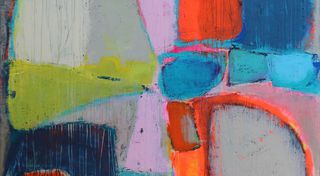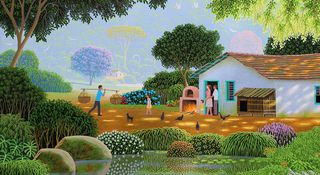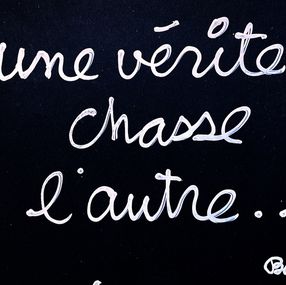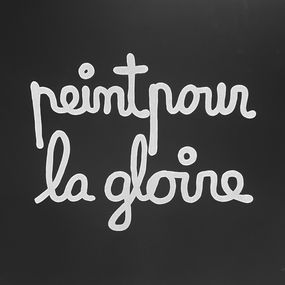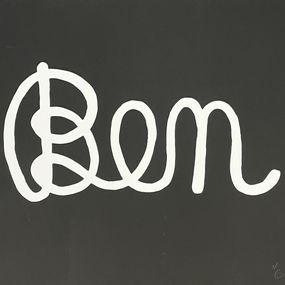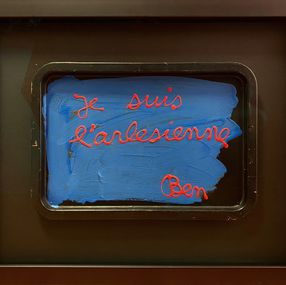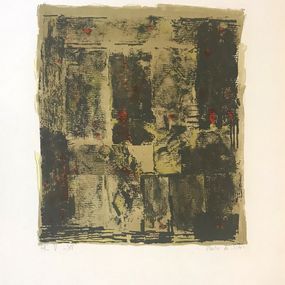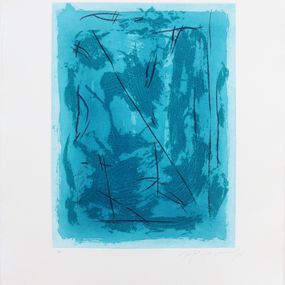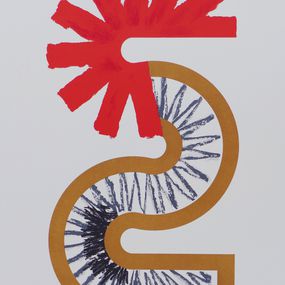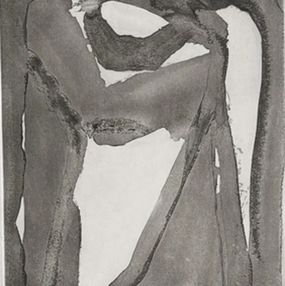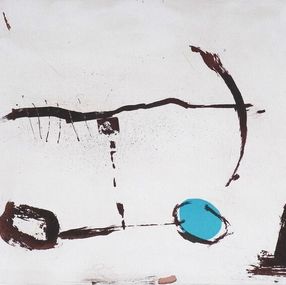
Composition pour les JO,
1992
Ben
Print : Screen Print
63 x 90 cm 24.8 x 35.4 inch
Free returns within 14 days
Authenticity guaranteed
Learn moreSecure payment
About the artwork
Type
Numbered and limited to 250 copies
Signature
Signed artwork
Authenticity
Sold with certificate of Authenticity from the gallery
Invoice from the gallery
Medium
Dimensions cm • inch
63 x 90 cm 24.8 x 35.4 inch Height x Width x Depth
Framing
Not framed
Artwork sold in perfect condition
Artwork location: France
Numerotation of the send print can be different from the photo.
Imagine it at home
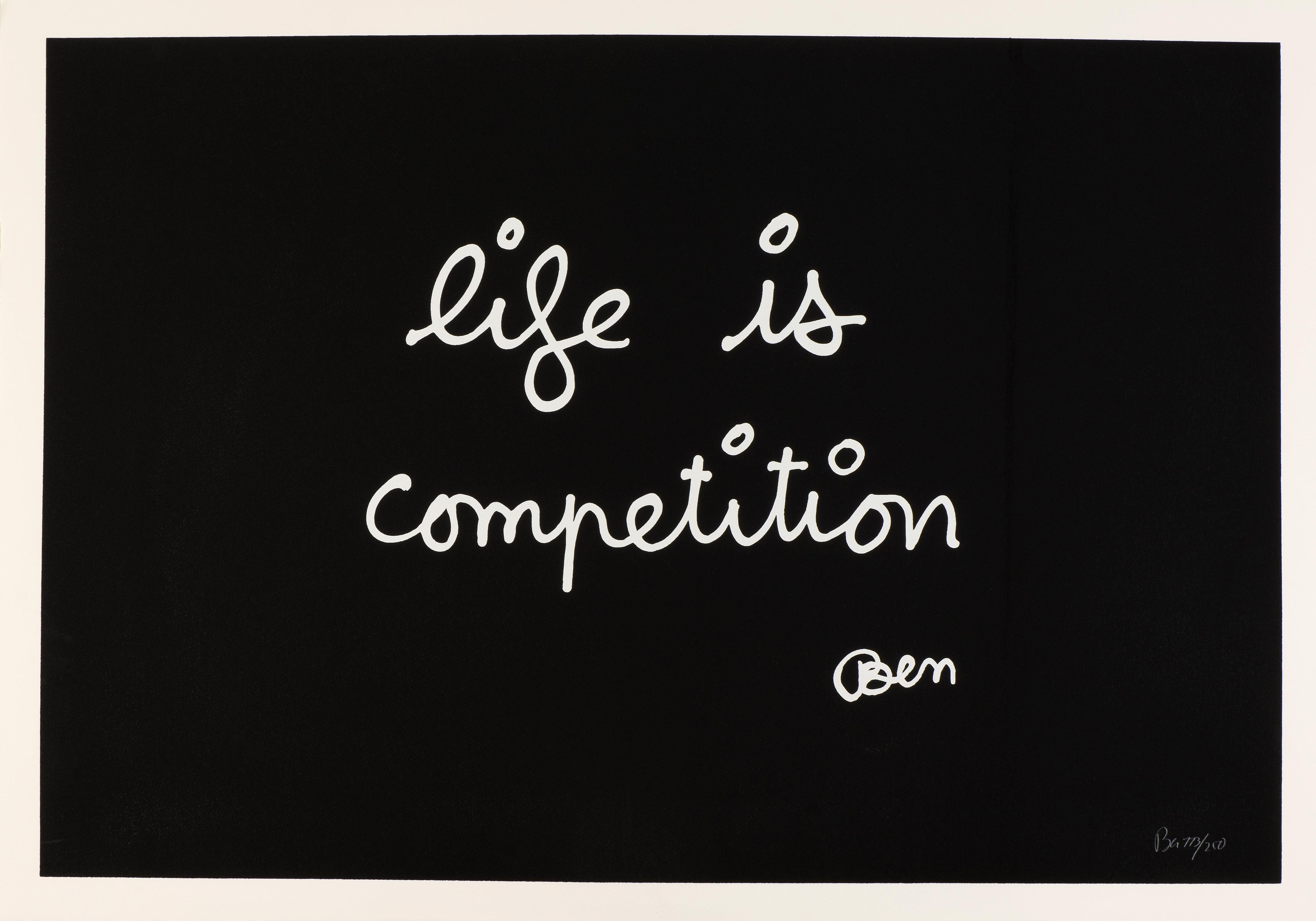
Discover more by the artist
Presentation
Is everything art? A question which is tirelessly asked in History of art and by the artist, Ben. His real name Benjamin Vautier, born in Naples in 1934. His future will be built between Switzerland, Turkey and Egypt but also and mainly in France, as he moves to Nice.
He asks a lot of questions, mostly through his paintings. Famous for his written works, constantly affirming or questioning the world around us. In 1950, he opens a stall in Nice where he organizes exhibitions. This place quickly becomes a place for artists of the region to get together, who nourish the reflexion on art as a team.
Ben spends time with César, Martial Raysse and Arman. Together, they make up a group of artists and work on their quest for novelty and turn into the Ecole de Nice. They want to prolong the heritage of Marcel Duchamp and drive art into a corner, by walking on the footsteps of John Cage or the Dada movement.
Ben wrote his destiny in 1953 « Il faut manger, il faut dormir », with this simple and obvious paraphrase, he created his first "writing". To speak and question art in a better manner, he decides to write it down and put it in letters, through a visual writing. He initiates a step towards conceptual art, which isn't developed yet.
As a logical extension of his approach, Ben then focuses on the importance of the artist's signature in art. His first signature saw the light of the day in 1958. He just doesn't scribble on a piece of paper, no, he signs the world, everything on the move around him.
This way, his questions the concept of ego, of me, but also the idea of appropriation. These strong notions shake up the codes of art, just the way the artist wanted to. As for the art marker, Ben underlines the strength of the signature today, which is sometimes more important the art work itself.
It's going to be a tough task, making the world his but Ben doesn't give up. He signs in abundance, people in the streets, his friends, family and creates his first living sculptures in 1959. Through labeling his environment, Ben has the impression of linking life to art, and once again asks us if everything is possible in art and if everything makes up art.
The thought of appropriation goes through a lot of research until 1963. In the meantime, he joins the Fluxus group, which considers itself to be a non artistic movement and questions the status of the artist and the art work in society Games and humor predominates the group, and Ben's work will soon be influenced by this.
His handwritten punchlines in white with a black background resonate like true slogans. He doesn't hesitate to express on current events and makes his written word echo. A big fan of school, Ben multiplies derivatives and editions and signs on pencil boxes, bags and diaries. This way, he is able to register his art in a conceptual dimension, which is within reach for everyday.
More works from Galerie Hus
Artsper delivers internationally. The list of countries is available in the first step of your cart.
If your country is not listed contact us at [email protected] and we will see what we can do.
Note that Customs fees may apply for works shipped internationally. This is indicated in the first step of the shopping cart.
You can choose a delivery address different from the billing address. Make sure that a trusted person is present to receive the work if you cannot be there.
Have you purchased a painting, sculpture or work on paper?
Find our expert advice for the conservation and promotion of your works in the articles below:
Artsper offers you access to more than 200,000 works of contemporary art from 2,000 partner galleries. Our team of experts carefully selects galleries to guarantee the quality and originality of the works.
You benefit from:
-
Works at gallery price
-
Return within 14 days, regardless of your location
-
Easy resale of the work purchased on Artsper
-
Personalized research tools (selection and tailor-made universe)
Our customer service is available for any assistance.
At Artsper, our mission is to allow you to collect works of art with complete peace of mind. Discover the protections we offer at every stage of your shopping experience.
Buy works from top galleries
We work in close collaboration with carefully selected art galleries. Each seller on Artsper is carefully examined and approved by our team, thus ensuring compliance with our code of ethics. You therefore have the assurance of purchasing authentic, high-quality works.
Total transparency: you know what you are buying
Before being posted online, all artwork on Artsper is reviewed and validated by our moderation team. You can browse with complete peace of mind, knowing that each piece meets our criteria of excellence.
Personalized support: our experts at your service
Our team of contemporary art experts is available by phone or email to answer all your questions. Whether you want advice on a work or a tailor-made selection to enrich your collection, we are here to support you.
Resell your works with ease
If you have purchased a work on Artsper and wish to resell it, we offer you a dedicated platform to relist it. To find out more, click here.
Make offers with Artsper: negotiate like in a gallery
You have the possibility to propose a price for certain works, just like in a gallery. This feature allows you to initiate discussions and potentially acquire your coins at advantageous prices.
Get help with your negotiations
Our team will negotiate for you and inform you as soon as the best offer is obtained. Do not hesitate to call on our expertise to ensure a transaction at the best price.
Order securely
Artsper satisfaction assurance
We want you to be completely satisfied with your purchase. If the work you receive is not to your liking, you have 14 days to return it free of charge, and you will be refunded in full, whatever the reason.
Secure payment with Artsper partners
All credit card payments are processed by Paybox, the world leader in payment solutions. Thanks to their strict security standards, you can transact with confidence.
Problem Support
In the rare event that an artwork arrives damaged or not as described, we are here to help. Whether for a return, refund, restoration or exchange, our team will support you throughout the process and will ensure that we find the solution best suited to your situation.
Conditions to benefit from Artsper protections:
-
Use one of the payment methods available on Artsper for your order.
-
Report any problems within one week of receiving the work.
-
Provide required photographic evidence (including original artwork and packaging).
Artsper guarantees cover the following cases:
-
The received work lacks a described characteristic (for example, a signature or frame).
-
The artwork has significant differences from its description (e.g. color variation).
-
The work is damaged upon receipt.
-
The work is lost or damaged by the carrier.
-
Delivery is significantly delayed.
With Artsper, you collect with complete peace of mind.
